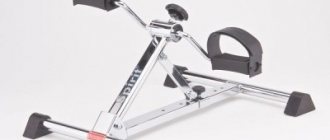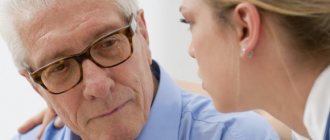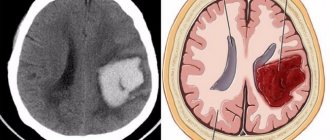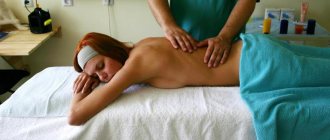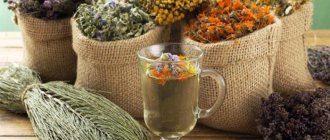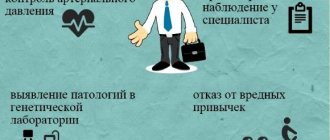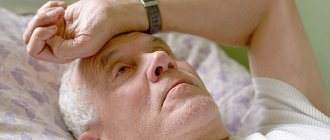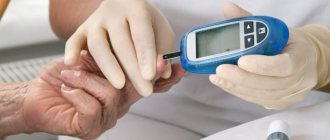Persons who have suffered an acute cerebrovascular accident with decreased motor function of the upper limb have significant limitations in everyday household, professional activities and social interaction.
Restoring movements in the hand after a stroke is the most important aspect for a person’s quality self-care and his return to full-time work.
According to official statistics, full recovery of arm function after a stroke is observed in only 20% of patients. This low recovery rate is due to a number of factors that doctors regularly encounter. Common obstacles are the victim’s lack of motivation and desire to perform exercises, disbelief in the possible success of manipulations, and lack of understanding of the need for regular training.
Quite often, patients with severe paresis (decreased muscle strength with limited range of voluntary movements) develop a depressive status. They are characterized by an apathetic state. They do not want to train and deny the existing recovery potential. In the initial phase of rehabilitation, when the recovery processes are as intense as possible, the patient’s unfavorable psycho-emotional state becomes an obstacle to performing the necessary measures.
Rehabilitation and recovery of the hand after a stroke is often a long, gradual undertaking, and it often feels like there is a physically, mentally and financially challenging road ahead. But with the ever-expanding modern treatment methods used in the community of rehabilitation specialists Irakli Pozharisky, there are many ways to approach the moment of recovery without excessive material costs and psychological discomfort.
Activities to eliminate the consequences of a stroke should be carried out daily, solving one problem at a time. Then each completed step of progress moves on to the next, more physically demanding stage. It is advisable to carry out simple, repetitive exercises in the first months after a stroke, when muscle balance and strength have not yet been restored, and the rate of neuroplasticity (the ability of the brain to change based on new experiences, behavior, thinking and emotions) is at its highest.
Basic arm exercises should be performed daily as soon as the recovery process begins. Their implementation and the results obtained give hope and encouragement for recovery. Regardless of how affected the upper limb is, or what limitations exist, exercises to restore the arm after a stroke are aimed at strengthening strength and restoring motor skills, often weakened during illness.
Mechanism of stroke
There are two types of strokes - hemorrhagic and ischemic. In the first case, the integrity of the wall of one of the cerebral arteries is compromised, resulting in internal bleeding directly into the brain tissue, leading to their death. Conversely, with ischemic stroke, vascular obstruction is observed due to excessive spasm or blockage by a thrombus. As a result, the area of nervous tissue does not receive the nutrients and oxygen it needs and dies due to hypoxia.
Note! Without instrumental diagnostics, it is very difficult to determine the type of stroke, so the patient should not be given medications until doctors arrive.
There is no single reason for the development of stroke. It has been established that the likelihood of ischemic stroke is influenced by many factors, with one of the leading ones being the presence of atherosclerosis. In addition, the following also have an adverse effect:
- Smoking.
- Drinking alcoholic beverages.
- History of coronary heart disease or heart attack.
- The presence of cardiac arrhythmias, in particular atrial fibrillation.
- Metabolic syndrome or obesity.
- Diabetes mellitus, impaired glucose tolerance.
These causes are not direct triggers for the development of stroke, but they contribute to the development of atherosclerosis and blood clots, which can ultimately lead to serious consequences in the form of loss of mobility and sensitivity in certain areas of the body.
Pathological reactions
Below are the most common pathological reactions observed in persons affected by a stroke.
Muscle spasticity
When a stroke occurs, increased muscle tone occurs, increasing with arm tension and causing involuntary resistance during passive movement. Muscle spasticity (otherwise called spasticity) is manifested by muscle weakness, spasms, increased tendon reflexes, partial or complete loss of motor functions of the limb. This pathological phenomenon occurs due to a disruption in communication between the brain and the muscles of the hand. Damage to natural nerve connections makes it more difficult for the patient to fully straighten their fingers or to grasp objects. Simple, repetitive rehabilitation exercises restore lost connections between the mind and muscles, correct nerve pathways, and prevent spasms. A series of treatments are often prescribed to relax, stretch and strengthen the arm muscles.
Hand strength and function
Gripping, strength, and other movements of the upper extremity are often impaired after a stroke, making lifting, grasping, and releasing objects more difficult. This makes it difficult or impossible to perform everyday household tasks and makes a person dependent on service providers. Additional problems include loss or gain of sensation in the injured limb. The development of pain and its intensity often depend on whether the stroke occurred in the dominant or non-dominant hemisphere of the brain.
First aid and early recovery period
If a stroke is suspected, the patient must receive qualified medical care as soon as possible. While waiting for doctors, it is better to place the patient on his back. Place pillows under your shoulders and head and align them so that your neck and head are in line at an angle of approximately 30 degrees to the horizontal line of your legs. It is necessary to closely monitor the patient, since stroke patients are at high risk of vomiting, during which time you should help him turn his head to the side and make sure that he can breathe.
Effective methods of rehabilitation
There are many ways to restore a hand after a stroke. They should always be used comprehensively and systematically, regularly, otherwise a lasting and pronounced result will not be obtained.
The most important exercises for restoring mobility are the arm exercises. Initially, a specialist deals with them with the patient, then you can continue on your own. The exercises are supplemented by classes on special simulators that will help restore muscle elasticity, sensitivity of nerve endings and arm strength.
The list of means used for rehabilitation includes the following:
- Gymnastics: general for the whole body, feasible, without overwork dangerous for the patient, and local - for the affected limb.
- Performing simple exercises to help restore familiar functions: writing texts with a pen, drawing, modeling from plasticine and clay, sewing and many other processes.
- Reflexology.
- Acupuncture.
- Massages.
- Therapeutic baths.
- Mud applications and wraps.
- Swimming. This is a very good way of rehabilitation, in which all muscles are loaded evenly and are perfectly trained without overload.
- Drug therapy. Without it, treatment and rehabilitation will not be complete.
The medical staff will advise you what to do if your right arm does not work. It is usually recommended to start with the healthy limb, visualizing synchronous actions with the affected arm. This helps to “turn on” the necessary elements in the brain and make them obey the will of a person. The transmission of impulses will become better, which will trigger a kind of “chain reaction”. When rehabilitating after a stroke, no methods should be neglected.
Modern approach to post-stroke rehabilitation
Medicine involves an interdisciplinary approach. It involves the participation of several specialists in the rehabilitation process:
- Rehabilitologist.
- Physiotherapist.
- Massage therapist.
- Neuropathologist.
- Speech therapist.
- Occupational therapist.
A rehabilitologist and a physiotherapist are primarily concerned with restoring movement in a paralyzed limb. For this purpose, special sets of exercises are used that the patient must perform every day. In the first stages they help him, in the future he must perform them at home on his own. Doctors will monitor progress and, if necessary, make changes to the program if the need arises.
It is important! In addition to direct rehabilitation, the patient should be helped to accept new living conditions, re-teach him how to care for himself and perform everyday tasks.
Development of the hand after a stroke
Exercises for hands
Good day, friends. Often, after a spinal injury or stroke, a person’s hand and steering wheel are partially or completely paralyzed, which, as you understand, does not allow you to carry out your usual activities and is extremely disruptive.
the exercises for the hands , everything is shown in detail in the video below (it’s better to see it once), I’ll just add that in addition to exercises for the hands, you should definitely do exercises for finger motor skills that help restore movements, sensitivity and certain areas of the brain.
Also, with paralysis of the hand, it is not possible to simply tie shoelaces; to train this skill, there is a special sneaker with lacing on which you need to learn these movements.
It is necessary to perform previously familiar movements such as turning the light on and off, closing the door, tightening the nuts and much more.
In hospitals, as a rule, there are special stands with imitation of these exercises for the hands.
where you can hone these actions, and in rehabilitation centers there are robotic mechanotherapy simulators, such as in the center of Sestroretsk.
In principle, these exercises for the hands are sufficient, the main thing is to do them regularly. Let me remind you once again about the video at the end of the article, which shows in detail how, for example, to perform a set of exercises.
I would like to add something: if you live in Moscow and have problems with your teeth, I recommend you a good dentistry on Serpukhovskaya.
If you find the article useful, share it with a person in trouble
Restoring hand movements after a stroke
It is possible to return to normal life - you just need patience and work on yourself
The consequences of a stroke depend on the individual case. One may lose speech, another may lose memory, and so on. These processes can be restored using special techniques. In this article we will look at what can be done if problems with the arm begin after a stroke.
Before this, it is worth noting that the correct instructions regarding activities related to the restoration of the arm must be obtained from a physiotherapist, because it is he who will be able to select the most suitable complex for a particular person. Also, you should not think that the result will be instantaneous. Sooner or later, it will happen, the main thing is not to give up. It is possible that the functionality of the hand will be fully restored, but before that you need to try very hard.
In total, restoration of hand movements after a stroke is aimed at eliminating the following problems:
- muscle spasticity;
- paralysis;
- contracture;
- atrophy;
- circulatory disorders.
General recommendations
After a stroke, a person whose arm mobility is impaired first faces a problem such as muscle spasticity.
Due to the fact that the muscles were immobile for a long time, they lost their elasticity and shortened slightly. Muscle tone increases due to paralysis.
And because of this, spasticity occurs, manifested in stiffness and limitation of movements. There are several recommendations that, if followed, will help combat this problem.
Need to change hand position frequently
You should not allow your hand to remain in one position for a long time.
- You need to perform exercises several times a day to stretch your muscles and warm up your joints.
- The room should be maintained at a comfortable temperature, as low temperatures slightly increase hand spasticity and discomfort.
- You should also get used to low temperatures.
There is no need to strive for warm conditions to become an integral parameter for normal living. - Any exercise, active or passive, must be performed along with an extended inhalation. This means that exercises for spastic, that is, tense muscles, must be performed while exhaling.
- Passive movements, indicating the presence of an assistant, are performed in one direction and in one plane.
- Muscle massage, which involves increasing tone, is performed only by stroking.
Start
Rehabilitation needs to start with someone's help
The first movements will most likely be performed with an assistant. He needs to carefully and smoothly bend and straighten his arm at the shoulder, then at the elbow and hand. He will also bend his arm back and forth, side to side, and in other ways.
The assistant should be told to perform the movements with the patient's hand that he would perform himself. At this time, the patient himself should try to begin to control his hand, mentally helping the assistant.
Thanks to this, after a certain period of time, the feeling that the hand can be controlled will begin to appear. Even if you only manage to pull your hand, it will already be a small victory.
There is an exercise for you to do on your own. To do this, you need to lie down or sit down, relax and close your eyes. It is advisable to imagine that the hand is obedient. It’s easier to do this if you remember the feelings before the stroke.
It is advisable to imagine a mental picture of how the hand is freely controlled. Then this picture should be, figuratively speaking, “superimposed” on a real hand and try to feel control. If even one finger moves, it is already a success.
But you shouldn’t stop, you need to move on, and then two fingers will move, then the hand, and so on.
It must be remembered that these are just examples of the first movements of the hand. They depend on the type of stroke, its severity, and other factors. Recovery of the arm is slower than recovery of the leg because the latter occurs somewhat unnoticed.
This is explained by the fact that the affected leg is used in one way or another to make necessary movements, for example, walking around the kitchen, to the toilet, and so on.
In comparison, the affected hand is freed from work, which is completely transferred to the healthy hand.
Additional exercises
Massage is an integral part of rehabilitation
Additionally, you can do a massage. The main thing is that it brings pleasant sensations, not pain. You can start the massage with a healthy hand, after which you can move on to the paralyzed hand. Let the movements be fast, but not forceful. It is better to perform massage twice a day - in the evening and in the morning, lasting from ten to thirty minutes.
After the hand begins to feel, it is advised to continue exercises with the fingers, because their activities are connected with the brain. Again, you should remember how they moved before the attack, and then you should try to move them. At first the movement will be very small, but gradually it will increase.
After the result is more obvious, you can begin to stretch your fingers. This can be done using massage movements on each finger separately. Then it is advised to do the following exercise: the fingers in the hands are spread wide, and then clenched into a fist. This must be repeated several times, gradually increasing the load.
Then you can move on to training the muscles of the shoulder girdle, since that is where they are the most developed. They are responsible for raising the arm and lowering it.
During training, it is important to learn new movements without concentrating only on raising your arm. For example, you can imitate the flight of birds.
Even if some exercises look funny, the main thing is that they give the expected result.
It is recommended to use a swing to strengthen the shoulder girdle. For example, you can push off from a pillar with your hand. If you change the angle of bend of the arm, different muscle groups will be loaded.
ethnoscience
You can use traditional medicine methods. However, you should also consult your doctor about this. Here are examples of some popular recovery methods.
- Royal jelly and honey.
- An ointment based on pine needles and bay leaves, which is rubbed into the affected hand.
- Tincture of mountain arnica flowers.
- Medicine based on Sophora japonica.
- Collection of herbs from motherwort, mint, St. John's wort and so on.
A recovery course in a sanatorium would be a good idea
It may not be possible to return your hand to its previous state of activity at home. Then it is best to undergo a recovery course in a specialized sanatorium, where good care and all necessary procedures will be provided.
In addition, you can sign up for special massage courses, which will be conducted by specialists in their field. Let us remember that one of the goals of the hand restoration process is precisely the restoration of blood circulation. Massage helps with this.
Thanks to good blood circulation, arm activity will be restored much faster.
Under the supervision of an experienced doctor, recovery will be much more effective. Of course, you need to look for and ask for new methods of restoration, but it is best to discuss all your actions with your attending physician, who, taking into account the characteristics of his patient, will choose the best ways to restore motor activity of the hand.
Hand rehabilitation exercises
In the first stages, it is important that the patient simply performs the maximum possible range of movements with the affected limb. It is enough for him to simply move it, move it within the bed, shift it from one side to the other. To work with fine motor skills in the early stages, simply ask him to straighten his fingers and then bend them, repeating this manipulation several times.
It is important! Before exercising the affected arm, it is necessary to perform the necessary movements with the healthy arm several times in order to activate the areas of the brain responsible for mobility.
For warming up, simple exercises are suitable - alternately raising and lowering the left and right arms along the body, bending and the usual bending of the limb at the joints. After this, you can move on to more complex exercises. If the motor disorder is minor and the patient feels sufficiently strong, regular gymnastics is perfect for warming up. Warm-up lasts about 7-10 minutes. For convenience, you can use special simulators.
Note! If a limb is swollen, then you should not put too much strain on it, but you should also not stop exercising. In such cases, it can be useful to stretch it, give it a light massage and postpone the workout a little. In any case, it is advisable to show swelling of the hand to a doctor.
To better develop the shoulder joint girdle, the following complex should be performed. Take a dumbbell or other weight in your hand, after which it rises up above your head, then you need to return it to its original position. Ten such repetitions are performed. Next, the patient needs to raise his straight arm to shoulder level and move it to the side, then lower it to the starting position. Then you need to make the shoulders themselves work. To do this, the patient must lean forward slightly and alternately bend his arms with dumbbells at the elbow joints.
How to develop fingers after a stroke
Restoring movement of the hands after a stroke.
The left side of my body was the most affected by the stroke. It hit my left hand especially hard. Almost complete paralysis occurred. And numbness appeared in all fingers. After a couple of weeks, sensitivity and mobility returned slightly. The numbness decreased and was partially replaced by a tingling sensation in the fingertips. It was as if his hand had been rested.
Raising my left hand was difficult. It was impossible to grasp or hold anything with my hand. Didn't move his fingers much. The movements that resulted were insignificant. Coordination of movements was completely impaired.
Things were better with the right hand. I could move it more actively than the left one. I was able to raise my hand and move my fingers. Coordination is less lost than in the left hand. Fortunately, the sensitivity of the right hand was almost full.
We started developing the arms. The remaining hope, sensitivity and at least some ability to make movements instilled.
The first thing we took on was restoring finger movements. We started with what we could do.
Exercise 1. Squeeze/unclench the left hand.
-lying in bed, I stretch my arms along my body.
-I clench my left hand into a fist.
- I forcefully hold my hand clenched into a fist for 2-3 seconds.
-I unclench my hand, straighten and extend my fingers, hold it in the unclenched state for 2-3 seconds.
-I do 10 repetitions.
Exercise 2. Squeeze/unclench the right hand.
-lying in bed, I stretch my arms along my body.
-I clench my right hand into a fist.
- I forcefully hold my hand clenched into a fist for 2-3 seconds.
-I unclench my hand, straighten and extend my fingers, hold it in the unclenched state for 2-3 seconds.
Exercise 3. Squeeze/unclench the hands of both hands, synchronously.
-lying in bed, I stretch my arms along my body.
- I clench both hands into a fist.
- I forcefully hold my hands clenched into fists for 2-3 seconds.
-I unclench my hands, straighten and extend my fingers, hold them in an unclenched state for 2-3 seconds.
Exercise 4. Rotation of the left hand.
-lying in bed, I stretch my arms along my body, then bend my left arm at the elbow and raise my hand up.
-rotational movements of the left hand in a clockwise direction. Slowly and smoothly, with the maximum possible amplitude
-I do 10 repetitions.
-rotational movements of the left hand counterclockwise. Slowly and smoothly, with the greatest possible amplitude.
-I do 10 repetitions.
-I straighten my arm and place it along my body.
Exercise 5. Rotation of the right hand.
-lying in bed, I stretch my arms along my body, then bend my right arm at the elbow and raise my hand up.
-rotational movements of the right hand in a clockwise direction. Slowly and smoothly, with the maximum possible amplitude
-I do 10 repetitions.
-rotational movements of the right hand counterclockwise. Slowly and smoothly, with the greatest possible amplitude.
Exercise 6. Rotation of both hands, synchronously.
-lying in bed, I stretch my arms along my body, then bend both arms at the elbow and raise my hands up.
-rotational movements of both hands clockwise. Slowly and smoothly, with the maximum possible amplitude
-I do 10 repetitions.
-rotational movements of both hands counterclockwise. Slowly and smoothly, with the greatest possible amplitude.
At first I couldn't do these basic exercises. Rotation of the left hand was especially difficult. Instead of spinning, she made intricate monograms.
If I could put a baton in my hand, I could conduct during the performance of some crazy piece by Schnittke)). It was impossible to maintain a calm and slow pace of rotation.
Against my wishes, my hands did everything abruptly and unclearly.
We tried to diversify the gymnastics movements. In order to train the brain and coordination. For example, we make two movements very slowly and smoothly, then two movements sharply and quickly. Or, when rotating the hands of both hands, we do 10 repetitions, rotating synchronously, then 10 repetitions, rotating the hands in different directions.
These simple exercises helped me begin to restore coordination when moving my arms, which had been disrupted by the stroke. We learned to make the necessary movements, and not what our hands did. I managed to force my hands to make movements smoothly and at the right pace.
When recovering from a stroke, we try to diversify our movements as much as possible. The more different movements we learn to do, the more complete the recovery.
If we notice that some movement is difficult to achieve, we pay special attention to it, do it more often and more.
When we understand that the movement is easy, we stop doing it and move on to the next exercises.
There were recommendations from doctors to do more repetitions with the left hand. But throughout the entire recovery period after a stroke, we load both the right and left sides equally.
At the beginning, the left arm and leg were even visually more crippled than the right ones. At the moment everything is even. The “Left” lags behind the “Right” only in coordination, speed and sharpness of movements.
In terms of strength and visually, there is no difference between “Left” and “Right”. Just like in life)))
Read the continuation:
Art.32. Gymnastics for fingers. Part 2. Complicated + rotation of balls.
And further:
Art.33. Gymnastics for fingers. Part 3. With an expander and dumbbells.
Source: https://www.insult.blog/single-post/2017/01/26/Gimnastika-dlya-vosstanovleniya-podvizhnosti-kistey-ruk
Rehabilitation gymnastics
Rehabilitation gymnastics includes the entire set of exercises, and not separate techniques for different parts of the arm. It should be done twice a day, and can be combined with a visit to the pool, exercise equipment and massage. You should start with a warm-up, then you need to warm up your joints and perform simple rotations, bending, bending, tensing and relaxing muscles, working with large objects or heavy objects.
In order for hand motor skills to return to normal, it is necessary to perform a number of gymnastic exercises. Medications alone can achieve little; they only provide pain relief and stimulation. Of course, gymnastics after a stroke is a long, painful and difficult process, but without it, your hands won’t remember how to, for example, hold a cup of coffee. It is imperative to restore neural connections lost during a stroke.
Exercises to restore the arm after a stroke should be performed regularly and not reduce the number and volume of performance. Always start the exercises on the healthy side, and then the paralyzed side. You can lift dumbbells, swim, sculpt something, write. In the first month of recovery, 15 minutes twice a day is enough to perform the exercises.
Always start with finger exercises first.
The fingers are rubbed and kneaded for 15 seconds, then placing your hands on a flat surface, spread them and try to lift them up one at a time, first with your palms down, then up 10 times. Try to clench and unclench your fist 5 times. Clasp your hands and lift all your fingers in turn 10 times. It also helps to snap your fingers, 5 times is enough.
